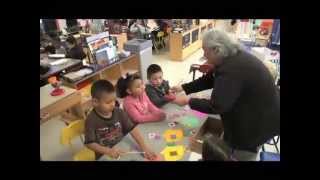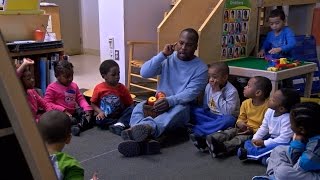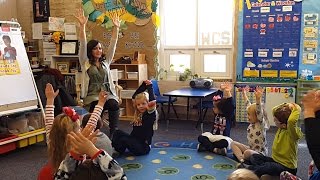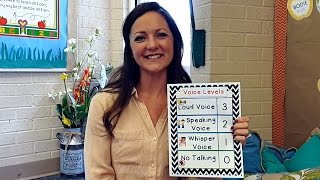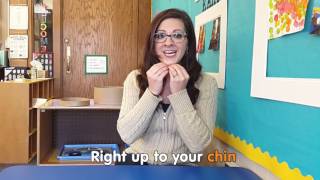Creating Classroom Rules
This video describes five steps teachers can follow to generate meaningful classroom rules and teach them to children.
Read Transcript
Narrator: Welcome, in this short video, we will highlight the importance of creating and using classroom rules. We will also provide guidance for crafting rules for your own classroom. The National Center on Quality Teaching and Learning uses the house framework to illustrate the effective teaching practices that support school readiness for all children. Creating classroom rules is part of the foundation of the house. Clear classroom rules, that are applied consistently, contributed to a well-organized learning environment, an environment where the children can learn and thrive. Teacher: Benjamin, nice job taking turns! Teacher: I like the way Isaac is watching Ms. Contreras. Now, everybody give me five. Teacher: Give yourselves a clap. Narrator: Use your walking feet. Be kind. Use an inside voice. Take turns. We’ve all seen lists of classroom rules, but where do they come from and why are they important? Teachers, along with the children and families, establish a small number of short, simple, positive rules that help everyone understand what behaviors are expected in the classroom from children as well as adults. Rules that set the norm for the classroom. Classroom rules are important for several reasons. When everyone knows and follows the rules, the classroom is calm, safe, orderly, and predictable. A well-regulated classroom helps children with their own self-control and regulation. And a well-regulated classroom means there will be more learning opportunities for everyone. Teachers, children, and families generate the rules for their own classroom. Rules can be based on shared expectations of appropriate behavior. Rules also consider the age of the children. While the list of classroom rules may look similar from one room to another, it’s valuable for teachers, children, and families, to work together to establish their own rules. LaTasha Rolland: The kids start to brainstorm and really think of things we can do, and we can’t do, and they begin to name those rules, and I write them down, so they can see them. And I also begin to put a visual with it. Narrator: Everyone in the classroom community needs to understand the rules. Write them as short, clear, and positive statements. And limit the number of rules. Three to five should be just enough. Then, post the rules in a spot where everyone can see them. But, it’s not enough to just write and post the rules. The children need to learn them and practice them. So, the teacher needs to teach them. Do this by demonstrating the rules, and describe each rule while you model it. Give children opportunities to practice the rules. And let the children know when they are demonstrating the rules. Teacher: And now whose turn is it, Kimberly? Kimberly: Uh, Sharon. Teacher: Sharon! Because she’s next. Narrator: Teachers also need to plan ahead and determine what will happen if a child doesn’t follow the rules. The teacher might remind the child of the rule or provide some additional practice or maybe even stop the activity. It’s important to plan ahead, so that you give a consistent and predictable response if a child doesn’t follow the rules. That will help the child understand and learn the rule. Teacher: Taylor-Reese was over here, and you brought your stick. What’s going to happen to your stick? What do you have to do to your stick? Boy: I’ve got to go somewhere else. Teacher: Right. Now let me put Taylor-Reese back, and then you’ll come back, okay? Teacher: I’m going to wait for Anna, and I’m going to wait for Tony. I want to make sure you guys are listening, so you know how to use the tent. Tony, come back. Thank you. I’m glad you guys made your good choices. Narrator: And remember, always encourage the children to follow the rules by acknowledging them when they follow the rules. Teacher: Oh, look at that remembering to turn the water off with your paper towel! Way to go! Teacher: Nice asking, Tylicia. Amy, Tylicia and Jamal just shared the jam. It was really friendly. Teacher (singing): I like the way that Zanobia, Miracle, Bay’le, Nyiemah, Nakeyah, Jahzir, and Charles are sitting. They know what to do. Narrator: In this video we focused on classroom rules: Why they’re important and how to create them. Classroom rules help make a classroom community that is safe and predictable so that everyone can participate and learn. Thank you for listening. Learn more about how to create rules for your own classroom by checking out the tips and tools and additional resources.
Help teachers and children
worldwide by sharing how
you teach.
A global movement of people sharing knowledge and learning from each other, to better educate our children and create hope for the world.
A global movement of people sharing knowledge and learning from each other, to better educate our children and create hope for the world.

